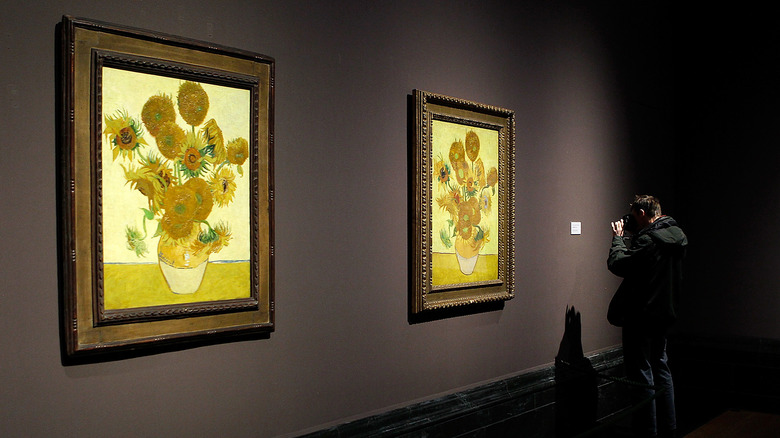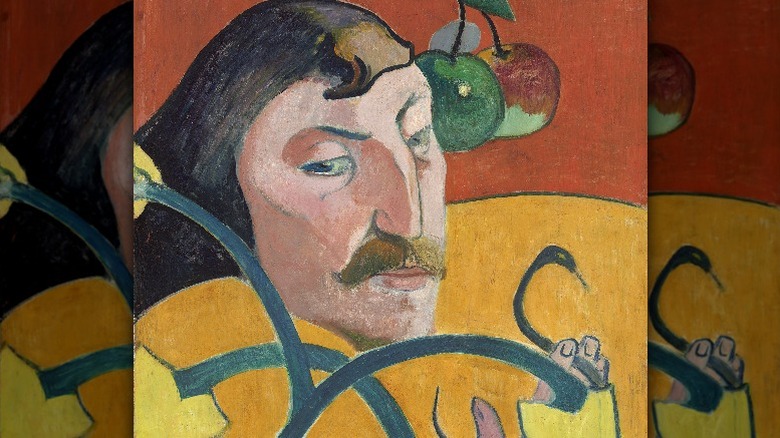The Master Painter Who Asked Van Gogh If He Could Have His Sunflower Painting
Vincent Van Gogh, beloved painter of the post-Impressionist school, cropped up in headlines around the world on October 14, 2022, when two protestors attacked one of his paintings with tomato soup. As BBC News reported, two people clad in "Just Stop Oil" T-shirts approached one of Van Gogh's celebrated sunflower still-lifes at London's National Gallery. They glued their hands to the wall, then threw a red liquid (later identified as tomato soup) over the painting. "What is worth more," one of them harangued the crowd, "art or life? ... Are you more concerned about the protection of a painting or the protection of our planet and people?"
In fact, the canvas was not damaged: It's protected by glass. Nevertheless, the quasi-vandalism has brought the world's attention back to Van Gogh's extraordinary sunflower paintings. Painted in Arles, France, between 1888 and 1889, these pictures contain some of the troubled Dutchman's most profound feelings and ideas (per the Van Gogh Museum). They were so important to him that when one famous artist asked for one, Van Gogh refused.
Paul Gauguin in Arles
That artist was Paul Gauguin. The two men were roommates in Arles for a brief period.
They were a strange match. Gauguin was 40 years old when he moved in with Van Gogh, who was 35 (via Britannica). He was a passionate man, a former stockbroker who had abandoned his family and had no greater desire than to "live like a savage." Even physically, the two men were opposites: Van Gogh, blond and ruddy; Gauguin, dark and Latin. (That's Gaugin's self-portrait above.)
According to the Van Gogh Museum, when Gauguin moved into Vincent Van Gogh's house, he found two of the sunflower canvases hanging in his bedroom. He was fascinated by them: "Completely Vincent," he reputedly called them, and he asked Van Gogh if he could have one. Van Gogh said no. He seems to have invested too much of himself into the series. Sunflowers symbolized gratitude to Van Gogh, and there's something poignant about his attachment to the sentiment, given his miserable life: depressed, wandering, unable to sell pictures.
The roommates of Arles
Paul Gauguin had come to Arles partly to live with another outsider in the world of art, partly because he couldn't afford better lodging, and partly, as Britannica makes clear, to please Vincent Van Gogh's brother, Theo. Theo was an art dealer who had taken a gamble on Gauguin's work; Gauguin thought that a gesture of support for Vincent might cement their shaky relationship.
Vincent was delighted. He had envisaged his house in Arles as a kind of counter-academy, "the Studio of the South," where artists could experiment freely, building on and departing from the Impressionist revolution of the previous decade (per the Art Institute of Chicago). It was an attractive vision, but impossible. Van Gogh and Gauguin were equally hard-headed and passionate, and they fought almost immediately. Britannica notes that it may have been Gauguin who sliced off Van Gogh's ear, although both men claimed Van Gogh did it himself.
Gauguin would leave Arles for Paris after two months. Later in life, he'd move to Tahiti, marrying a much younger woman and incorporating Tahitian art and landscapes into his own work. Van Gogh would remain in Arles, amid the sunflowers and cypresses, until his early death by gunshot — long thought a suicide, but perhaps not.


